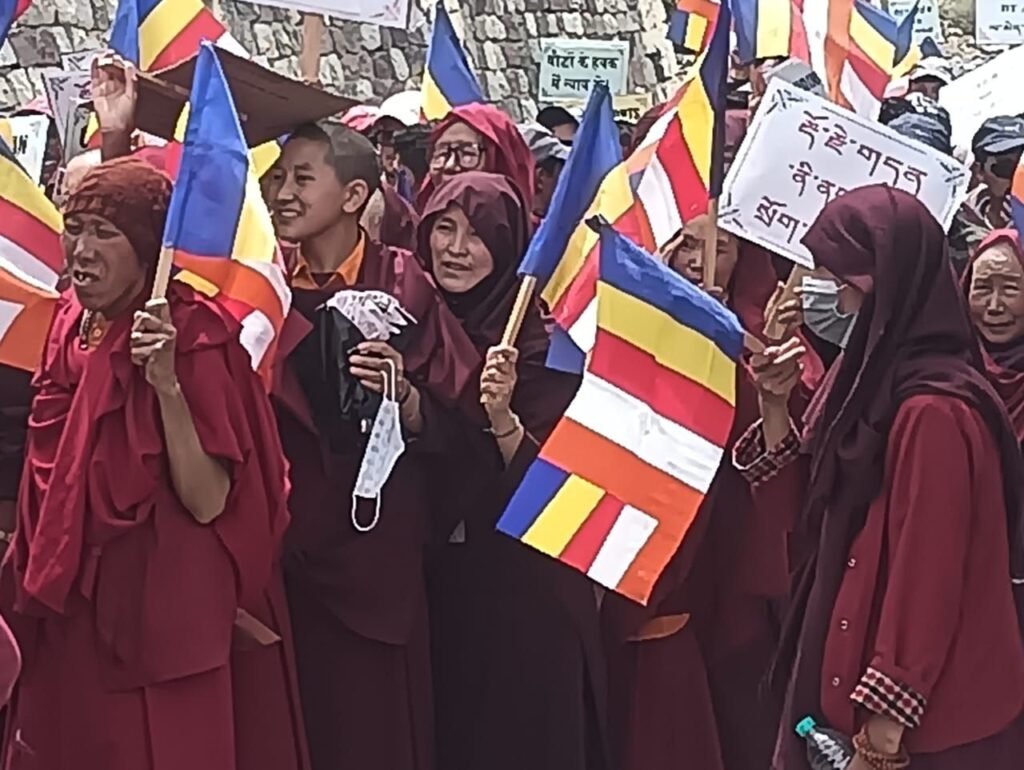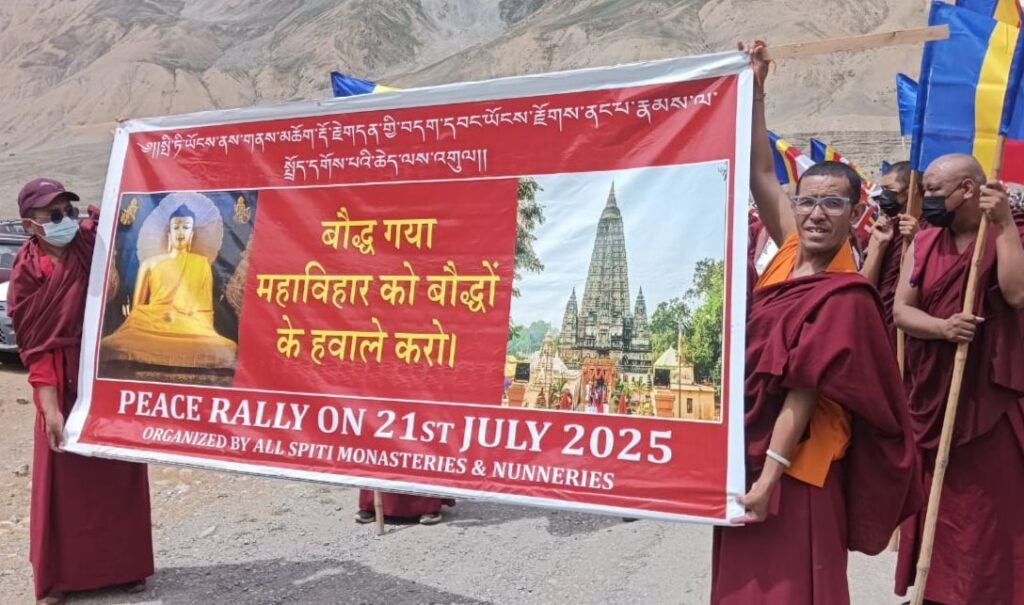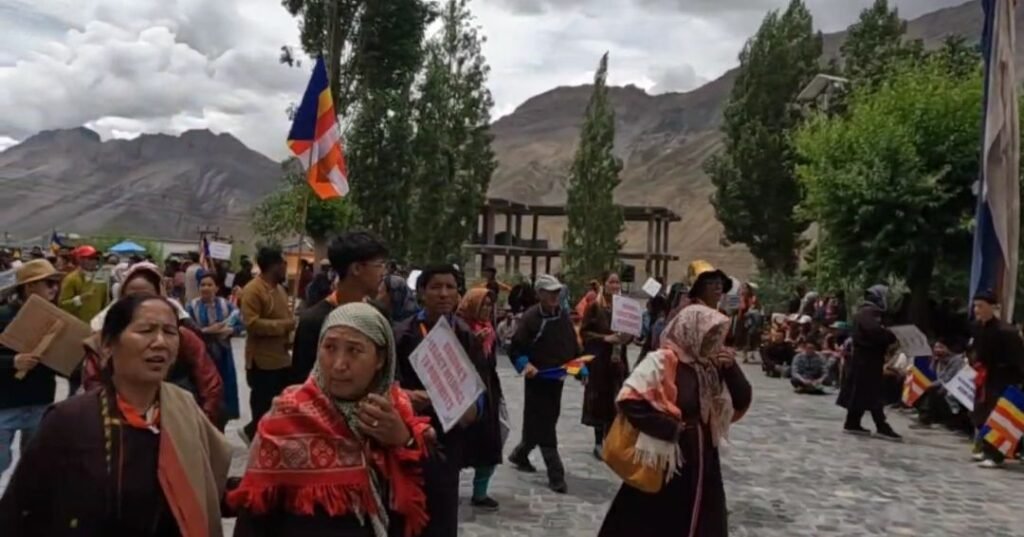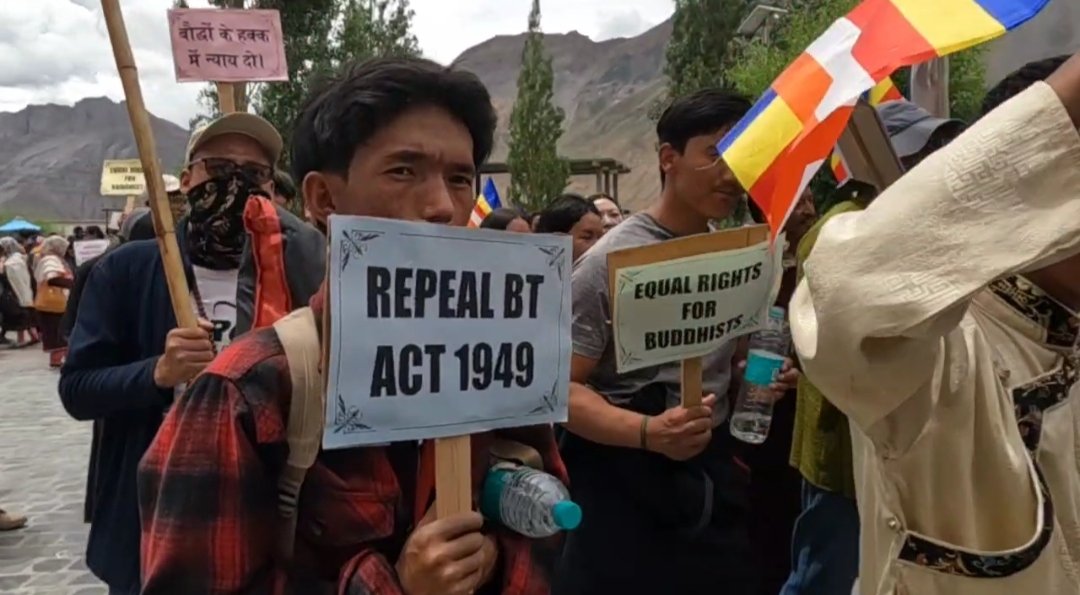Kaza, Spiti Valley | July 21, 2025, news views post,
In a powerful and peaceful show of spiritual unity, thousands gathered in the remote Himalayan town of Kaza—headquarters of Spiti subdivision bordering Tibet—to demand the repeal or amendment of the Bodh Gaya Temple Act, 1949. The protest, held under the collective banners of Spiti’s five major monasteries and the local nunnery (Nunnery Gompa), highlighted deep-rooted concerns within the Buddhist community over control and representation at the Mahabodhi Temple in Bodh Gaya, Bihar—the sacred site where Lord Buddha is believed to have attained enlightenment.

Chanting slogans and carrying placards, monks, nuns, women’s groups, youth associations, and elected representatives participated in the peaceful rally. Protesters questioned the current structure of the temple management committee, which comprises nine members: four Hindus, four Buddhists, and the District Magistrate of Gaya—who, by law, must be Hindu.

Buddhist leaders called the composition “unjust and discriminatory,” arguing that a Buddhist site of such unparalleled religious significance should not be governed under a structure that gives Hindus equal or majority control. Many described the law as a colonial-era relic that fails to reflect India’s secular ethos or the temple’s spiritual history.

“It is deeply unfortunate that the holiest site of Buddhism is still governed by an outdated law that limits Buddhist authority over their own place of worship,” said Nephunchoh Rai, former minister and one of the protest leaders.
“This rally is a clear expression of Spiti’s unwavering spiritual and cultural bond with Bodh Gaya and a call for justice and rightful representation.”
Demonstrators also condemned the requirement that the District Magistrate—who serves as the committee’s chairman—must be Hindu. They demanded either a complete repeal or urgent amendment of the 1949 Act to ensure exclusive Buddhist stewardship of the Mahabodhi Temple.
The protest, unprecedented in scale for the region, drew participation from nearly half of Spiti’s population, according to organizers, turning the streets of Kaza into a vibrant symbol of Buddhist unity and cultural assertion.
As peaceful protests continue across Buddhist regions of India, voices from the high-altitude valleys of Himachal Pradesh have added significant weight to a growing national conversation about religious autonomy, historical injustice, and the rightful custodianship of sacred spaces.




















